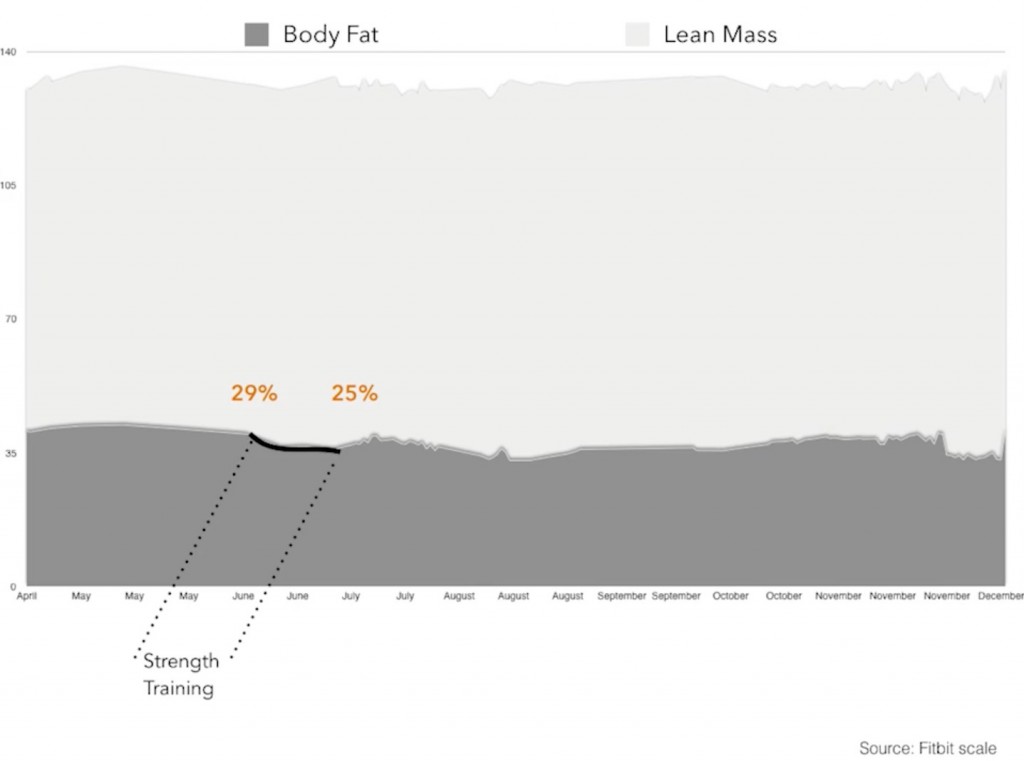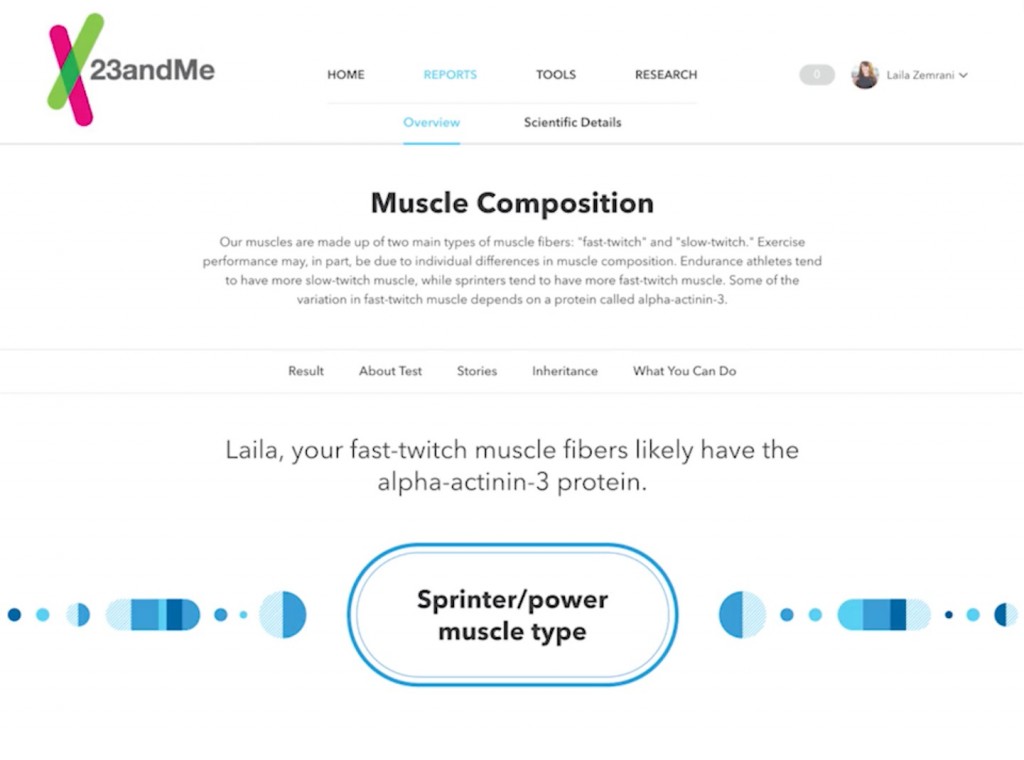Laila Zemrani: Training for Strength or Endurance?
Steven Jonas
February 23, 2017
While it is clear that exercise is beneficial, how does one decide what to do to get and stay fit? When Laila Zemrani surveyed people at the gym, she found that a majority don’t decide at all. Sixty percent didn’t know why they were doing a particular exercise. And of those, 50% admitted to merely copying whatever their neighbor was doing.
Laila spoke recently at a QS meetup in Boston about how she tried to be more intentional in her choice in exercise. In reviewing the number of available exercises, she was able to put them into two buckets: strength and endurance. She decided to track the effectiveness of each training regimen by focusing on a single metric and watching its progress. For strength, she focused on body fat ratio. For endurance, she looked out how long it took her to run the same distance. She then alternated her training every three months or so, focusing on one or the other.
Here’s what she found. When she focused on strength training, her body fat ratio improved. For instance, in one three month period it went from 29% to 25%. This type of improvement repeated itself a number of times. However, when she focused on endurance, she did not see improvements in the time it took her to run a certain distance.
It’s hard to know what conclusion to draw from these results. Are these the right metrics for assessing performance? What does it mean to respond more to strength than endurance exercise? However, the question of why Laila seemingly responds better to strength-based exercises may be found in her genetics. She used a DNA test from 23andMe and the results suggested that she shows a propensity toward building fast-twitch fibers which allow for better performance at explosive activities, such as sprinting or weight-lifting. On the flip side, people who are more proficient at building slow-twitch fibers tend to do better at endurance-type activities such as running long distance. Everyone has a combination of the two types of muscle fiber, but the ratio seems to be correlated with performance, depending on the type of activity.
With these results, Laila decided it made sense for her to focus on strength-building exercises, since it seems that her body was built for that type of activity. Laila feels that having this information is allowing her to personalize her regimen and be more intentional about how she exercises, rather than be too influenced by the latest fads in fitness.
It can be debated whether it makes sense to focus on strength as opposed to endurance, depending on which one you see progress in. For Laila, the appearance of progress is important psychologically, in that it is easier to motivate herself if she sees improvement. There could be a downside to appearance of quick improvement, though. Ralph Pethica also uses genetic data to inform his training. He is the opposite of Laila in that his body is better suited for endurance exercise. What he finds, though, is that he improves and adapts too quickly and sees his performance plateau. To overcome this, he found that switching between steady-state training sessions and high-intensity intervals minimized the time he spent plateaued.
Training with knowledge of your genetic background is still a nascent practice. It’s still unclear how this information can and should be used. Useful ways to take advantage of this genetic information is still being tested and developed, but progress could be hastened if more people knew if they had more slow-twitch or fast-twitch muscle fiber. If this awareness is increased, it could lead to better strategies to get more out of exercise and reduce frustration and, hopefully, abandonment of the gym.
You can watch Laila’s entire Show&Tell presentation that she gave at a QS Boston meetup. You can follow up with Ralph’s Show&Tell from the QS Europe conference.
Tools used:
Fitbit Aria Wi-Fi Smart Scale
23andMe DNA Test – Health + Ancestry
QS17 Tickets are Available
Our next conference is June 17-18 in lovely Amsterdam. It’s a perfect event for seeing the latest self-experiments, debating the most interesting topics in personal data, and meeting the most fascinating people in the Quantified Self community. There are only a few early-bird discount tickets left. We can’t wait to see you there.





